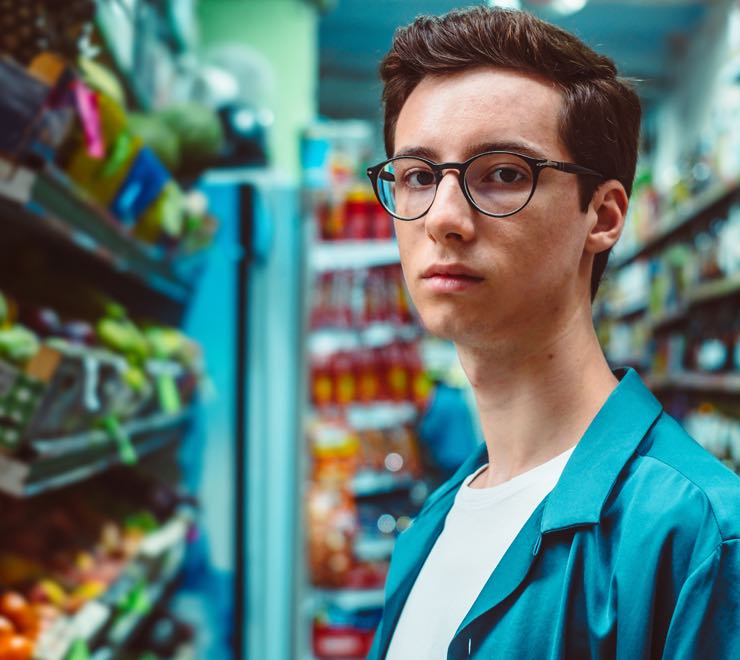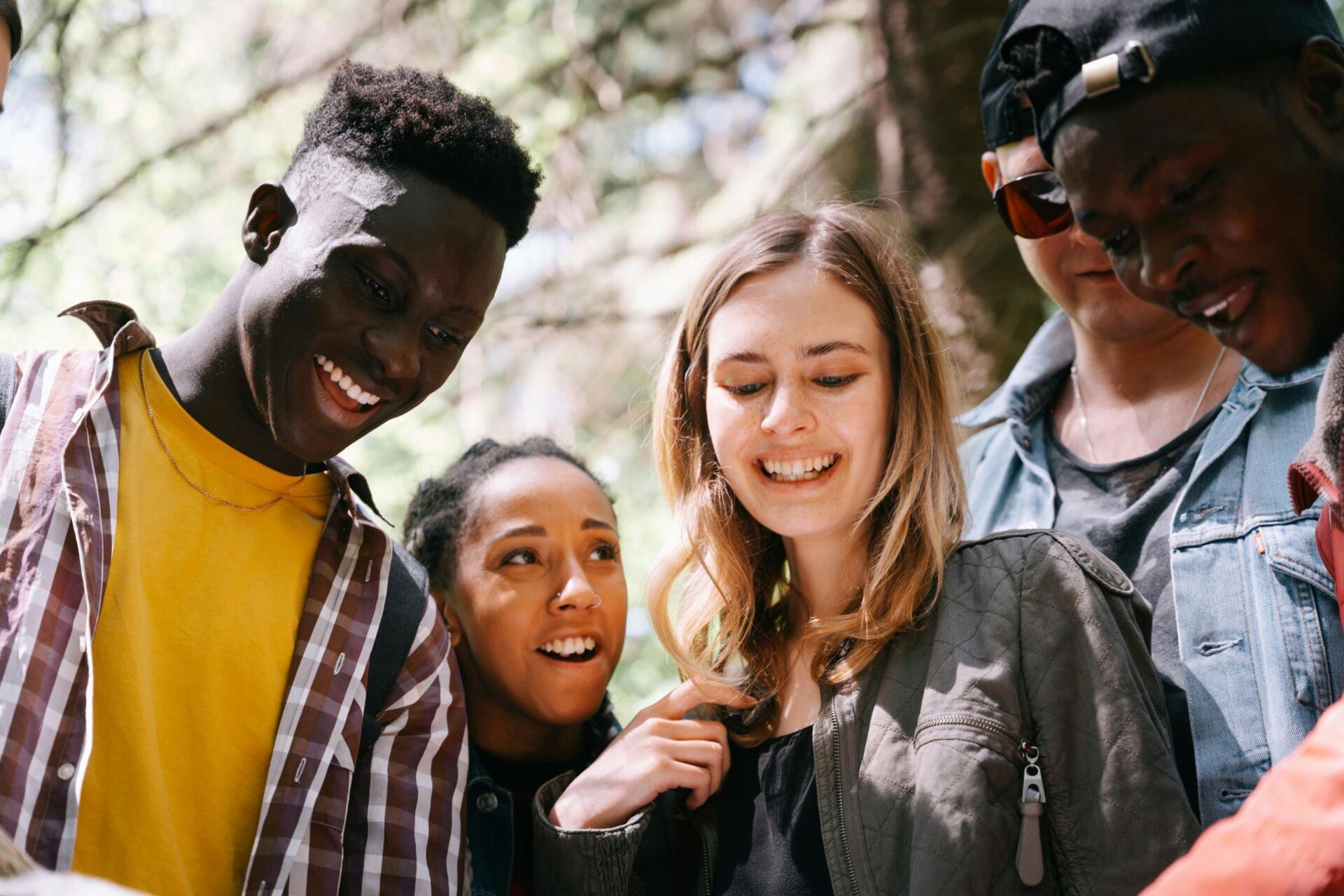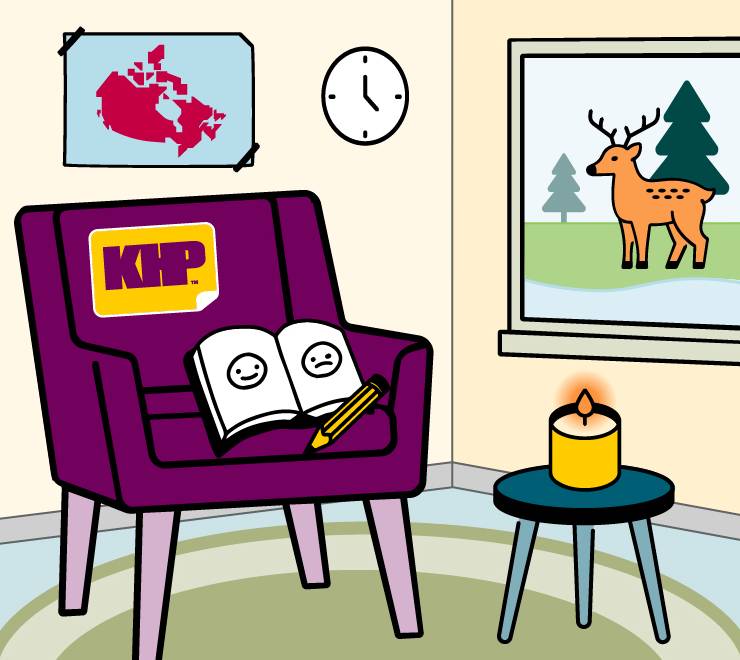Many people will use substances at some point in their lives without any issues. Substances are often referred to as drugs and/or alcohol — on this page, we’ll be using these terms to mean the same thing. Substance use becomes an issue when it starts to have harmful effects on someone’s life (e.g. difficulties at school or at home, negative impacts on mental and/or physical health, etc.). Here, Kids Help Phone shares information about substance use so you can make informed choices.
Substances can affect the body and the brain, both in the moment and long term. Some substances have higher risks and more harmful impacts than others. It’s important to know all the facts about a substance before you use it.
What are some types of substances?
Here are some categories and examples of substances (some substances belong to more than one category):
- tobacco and nicotine (in things like cigarettes, e-cigarettes, vapes, hookah, etc.)
- alcohol
- cannabis (also known as marijuana, weed, pot, herb, ganja, reefer or chronic)
- stimulants (e.g. cocaine, meth, speed, ecstasy / MDMA / molly, etc.)
- opiates (e.g. heroin, oxys, fentanyl, etc.)
- sedatives (e.g. ketamine and prescription drugs such as Ativan, Valium, Xanax, etc.)
- hallucinogens (e.g. LSD/acid, PCP, magic mushrooms, etc.)
- inhalants (e.g. glue, gasoline, etc.)
How do I know which drugs are legal or illegal?
Many drugs are legal. Some drugs, like alcohol, cannabis and tobacco, are legal if you’re above a certain age. Laws about these drugs vary by province or territory. Other drugs, like caffeine, are legal for everyone.
Prescription medication, like pain relievers and antibiotics, are also legal. Many drugs can be produced and sold both legally and illegally. For example, some legal drugs are sold illegally to people without prescriptions to use recreationally. If a drug wasn’t prescribed to you specifically, then it would be considered illegal to use.
Medication is generally safe to use if you take it as prescribed to you by a doctor. You can also buy some medication, like cough syrup and some pain relievers, at a pharmacy or other store (also known as buying medication over the counter). You can find directions for using these drugs on the label. Taking more than the recommended dose, or mixing these drugs can lead to illness, dependence and even overdose. It’s important to connect with a doctor or pharmacist about any medication you may be taking, especially if you have questions or concerns.
Why do people use substances?
There are a variety of reasons why people use substances, including:
- curiosity
- experimentation
- celebration
- to feel good
- to lose their inhibitions
- to cope with difficult feelings (e.g. anger, stress, anxiety, boredom, depression, etc.)
- to boost confidence
- to relieve stress
- to rebel
- to help cope with traumatic experiences, including discrimination, racism and systemic oppression
- social pressure or influences by friends and peers
- following a parent/caregiver’s example
- for a sense of belonging or social acceptance
- to avoid rejection
- messages in TV, movies and social media that make it look cool and fun
What are the effects of substances?
All substances have mood-altering effects that can impact you mentally, emotionally and physically. For example, you may feel “high”, which is different for everyone. It can mean feeling happy or euphoric, energized, reflective and meditative.
If a person uses a substance often, it can cause chemical changes in their brain and body, which can make it difficult to stop using the substance. For example, many drugs make people feel good, at least temporarily, because they encourage the brain to produce more dopamine (a chemical messenger in the brain) than it normally would. It’s possible for the brain to lose some of its ability to produce dopamine naturally. This means that someone may want to continue to use drugs to experience those good feelings again and/or cope with challenging feelings (e.g. sadness, anxiety, anger, etc.). Dopamine can give you feelings of euphoria, happiness and pleasure.
Dopamine is a naturally occurring chemical. Activities like eating, exercising, meditating, listening to music and spending time outside can also produce it.
What are the risks of substance use?
There are physical, emotional and social risks associated with substance use that can range from mild to severe. They may also vary depending on the substance. Here are some examples:
Physical risks
- alcohol can cause liver damage
- people who inject substances with used needles can get viral infections such as hepatitis or HIV-AIDS
- substance use during pregnancy can harm the fetus
- people who use illegally obtained substances can’t know for sure what they’re taking (e.g. some drugs mixed with other drugs/chemicals can be harmful, etc.)
- driving under the influence (i.e. while drunk or high) can affect a person’s attention, reaction time and ability to judge distances, which can increase the risk of death or injury
- some substances can affect coordination, the senses, memory and judgment, which can lead to safety risks
- an overdose can cause serious and sudden physical or mental damage, or even death
Emotional risks
- substance use can get in the way of developing and using coping strategies that usually work for you to deal with difficult feelings (e.g. sadness, anxiety, anger, etc.)
- substance use can sometimes make emotional difficulties worse over time, and can be especially harmful to young people at risk of developing mental disorders (e.g. depression, psychosis, etc.)
- some substances can cause short-term confusion, anxiety or mental disturbances, learning difficulties and/or memory loss
Social risks
- substance use may cause stress on a person’s relationships and increase the likelihood of conflict (e.g. with parents/caregivers, partners, friends, teachers, etc.)
- substance use can interfere with a person’s ability to function at their best at school and/or work and can result in a loss of interest in hobbies a person previously enjoyed
- because some substances are obtained illegally, substance use can be associated with violence and crime
- substance-related convictions may result in a fine, prison sentence and criminal record. Having a criminal record may affect future convictions, jobs and travel
What is withdrawal?
Withdrawal refers to the physical and emotional symptoms that a person experiences when they drastically reduce their substance use or completely stop using substances (also known as going cold turkey). Signs and symptoms of withdrawal can include anything from mild discomfort (such as a headache, sweating, vomiting, trouble sleeping, body shakes) to seizures. Some of the effects of withdrawal can be fatal. It may be helpful to consult with a doctor or safe adult before and/or while withdrawing from a substance.
When does substance use become an issue?
Some young people can experiment with drugs and alcohol and then stop using them or use occasionally without significant impact to their lives. However, some may move on to more high-risk drug behaviour.
Addiction is a common term used to describe when a behaviour is out of control, usually in a harmful way. The meaning of addiction may vary by person or culture. If someone develops a psychological and/or physical dependence on substances, they may receive a more formal diagnosis known as substance use disorder. When it comes to the risks and harms of substance use, we prefer to use the term problematic substance use, which describes using a substance to the point where it has negative effects on the person’s physical, emotional and/or social health.
These can be signs of problematic substance use:
- craving a substance (feeling like you have to have it or depend on it)
- feeling out of control of how much or how often you use a substance
- feeling a compulsion (urge) to use a substance
- using a substance despite negative effects
The brain continues to develop into people’s mid-20s. That means the part of the brain that’s responsible for judgment takes a long time to mature. When it comes to substances, a young person’s brain can have difficulty deciding how much is too much and when to stop. A young person may also find it hard to fully understand the risks of long-term substance use (e.g. impacts on internal organs, brain function, attention span, memory, etc.).
How can young people prevent substance use from becoming problematic?
Some factors that can help protect a young person from developing problematic substance use include:
- having a positive role model or mentor, like a parent/caregiver, teacher or coach
- having parents, caregivers or safe adults regularly available to them
- feeling a strong sense of connection to their family, school or community
- having goals and dreams for the future
- participating in extracurricular activities, such as clubs, sports teams or volunteer work
If you decide to use drugs and alcohol, it’s important to learn how to care for your safety and reduce the risk of harm. It may also be helpful to learn about how to recognize a drug or alcohol overdose and be aware of the signs, symptoms and steps to take to ensure those around you are safe.
If you choose to use substances, it’s important to have all the facts. If you’re concerned that you or someone you know has problematic substance use, you can search Resources Around Me for support services in your area. If you have questions about substance use, you can always call a Kids Help Phone counsellor at 1-800-668-6868. You can also talk with a volunteer crisis responder by texting CONNECT to 686868.





















